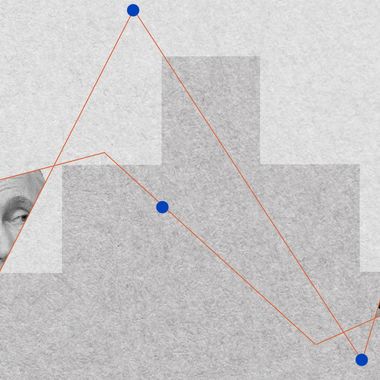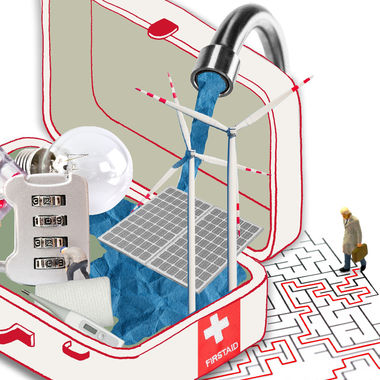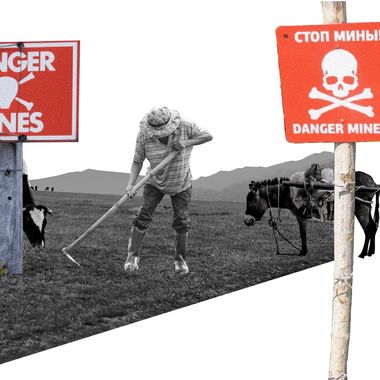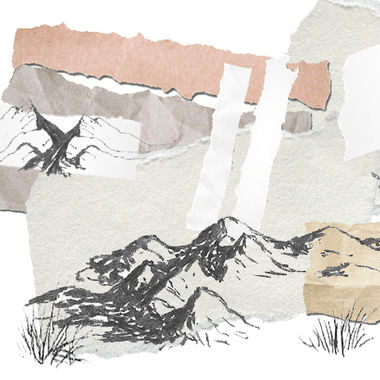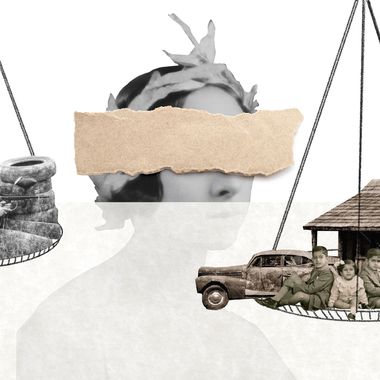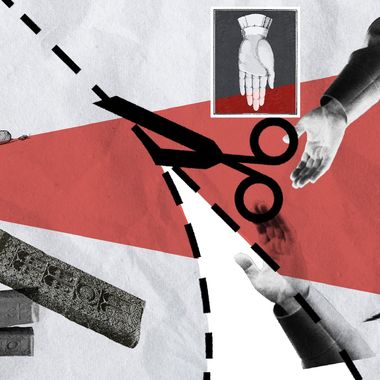Wed May 19 2021 · 11 min read
Russian Peacekeepers in Artsakh
Ambiguity of the Rules of Engagement

By Lusine Sargsyan
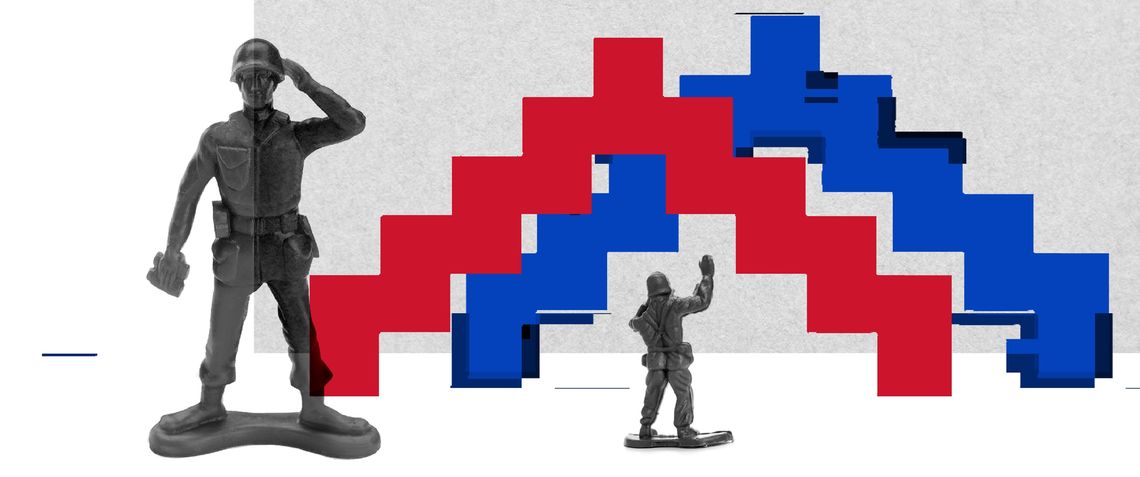
Illustration by Armine Shahbazyan.
For many years, Nagorno-Karabakh was the exception as the only frozen conflict in the post-Soviet space without a Russian military presence. The other three, Abkhazia and South Ossetia in Georgia, and Transnistria in Moldova by its eastern border with Ukraine, have had Russian troops stationed there long before 2020.
“The Russian imposed ceasefire agreement resulted in something that the Russians sought for a long time - direct leverage on the ground,” says Richard Giragosian, Director of the Regional Studies Center, an independent think tank based in Armenia. According to him, the deployment of peacekeepers also means that the safety and security of the Armenians in Artsakh no longer depend on Armenia but are now in Russia’s hands. This became clear when Secretary of Artsakh’s Security Council Vitali Balasanyan reported that conscription from Armenia to Artsakh had been suspended, and that the Artsakh Defense Army is being replenished with contract servicemen so that the caliber of the Artsakh Armed Forces can be maintained. “The fact that Armenia is no longer the guarantor of Artsakh’s security will further encourage the idea of Artsakh being a Russian protectorate, similar to Abkhazia or South Ossetia, which is not a favorable development for Armenia or Artsakh,” noted Giragosian.
What Is the Mandate of the Russian Peacekeepers?
Point three of the November 9 Russia-brokered ceasefire agreement that refers to the deployment of the peacekeeping mission states: “Peacekeeping troops of the Russian Federation shall be deployed along the line of contact in Nagorno-Karabakh and along the Lachin corridor, including 1,960 servicemen with firearms, 90 armored personnel carriers, 380 units of motor vehicles and special equipment.” A day after the agreement was signed by the three leaders, the first Russian troops of the peacekeeping force started arriving in Armenia. Giragosian noted that the peacekeepers deployed to Artsakh are different from those stationed in other conflict regions of the post-Soviet space. “The peacekeepers who came are not conscripts; they are professional soldiers and include combat engineers, sappers [minesweepers] as well as civil affairs specialists,” he added. Giragosian went on to note that he was surprised the agreement specified the number of peacekeepers deployed to the region since, unlike the peacekeeping missions backed by the United Nations or the Organization for Security and Co-operation in Europe, the Russian side was under no obligation to reveal that number. He went on to say that confirmed evidence and reports signal that the Russian military presence on the ground, both in terms of the number of peacekeepers and the types of equipment, is significantly more extensive than what appears on paper.
According to Olesya Vartanyan, senior analyst for the South Caucasus region at the International Crisis Group, the official number of peacekeepers that are deployed in Artsakh is quite small for a mission that would be tasked with protecting the inviolability of the ceasefire. In addition, the peacekeepers’ observation checkpoints are not located on the Line of Contact between Armenia and Azerbaijan. Instead, they are based on the main transportation junctions inside Artsakh or in locations of historical and cultural significance, such as Dadivank. Vartanyan went on to note that it is also not clearly defined whether the arms that the peacekeeping troops have under their possession are for self-protection or can be used to enforce peace in case a ceasefire violation is registered. “If we look at official statements and the reality on the ground, it becomes clear that the troops deployed in Artsakh are there to observe the ceasefire regime rather than enforce peace or protect the locals,” she explained.
Giragosian believes that, in the case of Artsakh, having a clearly outlined mission and mandate for the peacekeeping force is less important because these are political and diplomatic concerns that are likely to change over time. The mission of a peacekeeping contingent only sets out its objectives, but it does not specify how to achieve those objectives. Instead, Giragosian explained, it is the rules of engagement of a peacekeeping unit as a military force that are important to understand, because those rules will dictate how much freedom and flexibility peacekeepers have to shoot back or take military action against an Azerbaijani incursion. In the Balkans, for example, the NATO, U.S. and European peacekeeping forces each had different rules of engagement. To illustrate the importance of those rules, Giragosian brought the example of over 300 Dutch peacekeepers in Bosnia, who were taken prisoner by the Serbs in 1995 because they were not allowed to fight back. Although it is not clear what the rules of engagement are in the case of Russian peacekeepers stationed in Artsakh and whether they have the right to attack, pre-empt or defend themselves, Giragosian believes that it is fair to assume they can.
Vartanyan believes that having a peacekeeping mission mandate helps to clarify the rights and responsibilities of troops in conflict regions. In certain cases, the mandate is in place even before the mission is deployed. In others, it gets clarified at a later stage. In the case of Artsakh, the Russian peacekeeping force has been stationed in the region for over six months now, and clarifications regarding its mandate are still not in place. Vartanyan noted that having a mandate is essential and helpful to all the parties involved in the process, including Russians, Armenians and Azerbaijanis. However, the Nagorno-Karabakh context is extremely complicated and finding a consensus on even technical issues becomes highly politicized. “I would not be surprised if, at some point, the mandate gets lost in the discussions, which of course will be bad for the stability and clarity on the ground,” she added.
During the months following the signing of the ceasefire agreement, reports started surging about provocative actions by Azerbaijani servicemen, such as firing in the direction of two Armenian farmers working in the fields of Sarushen village.
As the November 9 trilateral agreement is vague regarding the mission and the mandate of the Russian servicemen in Artsakh, the peacekeeping force has been widened to include Russian government-funded initiatives. According to Vartanyan, in addition to the Russian peacekeeping mission, a number of other Russian agencies are currently present in Artsakh. Some of those agencies include the Russian-Turkish joint observation center, based close to Aghdam, as well as the Russian emergency service that is tasked with addressing post-war humanitarian issues. The Russian side has also been actively transporting construction materials to Artsakh as part of the post-war recovery effort. After the 2020 Artsakh War, in addition to HALO Trust, Russian peacekeepers and emergency services crews are also involved in clearing landmines and unexploded ordnance. One is left with an impression that the Russians are heavily invested to do as much as possible, which Giragosian believes is beneficial for two main reasons. “It is a direct investment in Artsakh, and it sets a precedent and opens the door to end the policy by the West of non-engagement because Artsakh is not a recognized state,” he stressed. Vartanyan, however, does not agree that there is an overwhelming Russian presence in Artsakh. “If we look at the demands on the ground and the urgency of many post-war issues, Russia’s engagement is a drop in the ocean, mainly because the situation still remains fragile and uncertain,” she added.
Increased Russian Influence and Its Implications
Although both Turkey and Russia were invested in the war, Turkey was the one that played a decisive role in Azerbaijan’s victory against Armenia and Artsakh. Numerous reports confirmed that Turkey supplied Bayraktar TB2 unmanned aerial vehicles (in violation of Canadian arms export provisions) and provided technical expertise to Azerbaijan, which proved to be pivotal in the outcome of the war. Turkey also recruited and sent Syrian rebel fighters to the conflict zone. In addition, Turkish President Recep Tayyip Erdoğan has been a vocal supporter of Azerbaijan on the diplomatic front, advocating for the restoration of Azerbaijan’s territorial integrity. Giragosian noted however that, despite Turkey’s heavy involvement and contributions, it was Russia and not Turkey that secured geopolitical victory and leverage. “We see a Russian buildup well beyond the limits of the peacekeeping deployment, including complete control and management of all regional trade and transport reopening, that is expected to happen,” explained Giragosian.
However, Giragosian believes that the Armenian side had no other choice but to abide by the terms of the November 9 agreement, including the deployment of Russian peacekeepers, in order to stop the war Azerbaijan waged along with Turkey, save lives and salvage what was left of Artsakh. But it is important to note that this is the first time that Russia accepted a time limitation for the deployment of its peacekeepers, which is yet another factor that sets the Nagorno-Karabakh conflict apart in the post-Soviet space. According to Giragosian, the deployment of peacekeepers for a period of five years was the only way to get Azerbaijan and Turkey on board. However, he also sees the time limitation as leverage, which Moscow can potentially use against Armenia to manipulate or threaten the Armenian government as the mandate of the Russian peacekeeping contingent deployed to the region approaches its end.
Over the recent months, reports started circulating that “control over journalistic activity has been stepped up” as Russian peacekeepers keep denying foreign reporters’ entry permits to Artsakh. As of April, it is estimated that at least ten foreign journalists have been denied entry by the Russian peacekeeping forces controlling access to Nagorno-Karabakh from Armenia. According to Giragosian, from a military point of view, Artsakh is still a conflict zone and the Russian peacekeepers are responsible for the security of Artsakh and its population. “This means that the Russian peacekeepers have a legal right under international military law to enforce restrictions, so that only Armenian or Russian citizens can enter Artsakh. Although this is a standard practice that is employed by western peacekeeping missions, it does weaken and undermine the democratically-elected government in Stepanakert,” says Giragosian. Vartanyan also agrees, saying that when the situation on the ground is fragile and uncertain, it is preferable to stay on the safe side, employ preventive mechanisms and not take unnecessary risks. She expressed hope that the situation will eventually change and, as there are stronger security guarantees, some of the restrictions will eventually be lifted.
Speaking about the Russian buildup in Armenia’s southern Syunik region (after the signing of the trilateral agreement, and the deployment of peacekeeping units to Artsakh, border guards of the Russian Federal Security Service were deployed to Syunik as it now borders Azerbaijan), Giragosian explained that the deployment of border guards along with peacekeepers is a general practice implemented across the world. “You have logistical support for any peacekeeping force that will include border guards, engineers, cooks, supply people,” explained Giragosian. It is called stability operations and, whether it is the Americans in Iraq or the Russians in Syria, this is common military planning. Vartanyan stressed that it is important to draw a distinction between the peacekeepers stationed in Artsakh and the border guards, who are part of the Russian Federal Security Service troops, stationed in close proximity to Azerbaijani posts in the Syunik region. She also noted that, in Abkhazia and South Ossetia, which are much smaller than Syunik, both the Russian military and border guards are present on the ground.
Giragosian already sees an erosion and a weakening of Armenian sovereignty and independence that are fueled by Russian build-up in Armenia and the Russian peacekeeping deployment. He noted that Armenian peacekeepers are no longer assigned to western peacekeeping operations in Iraq, Kosovo, Afghanistan, Mali and Lebanon. And only a few weeks ago, the Defense Ministry reported that the Armenian Armed Forces will not participate in Defender Europe 21 training organized by NATO, which according to Giragosian is a mistake because Armenia needs to maintain balance of power and have alternatives. “Armenia needs military ties with the west, China, India and not just any one country,” he added.
Russia’s interests in Nagorno-Karabakh seem to have always been the same: they do not want war and they do not want peace. At the outset of the 2020 Artsakh War, Putin’s statements mentioned the territorial rights of Azerbaijan and at the same time prioritized the ethnic rights of the Armenians. Giragosian believes that the Russian side will take advantage of prolonged instability and insecurity, and he does not have confidence in having the security of Armenia and Artsakh in the hands of Russian peacekeepers alone.
A Slow Return to Diplomacy
The OSCE Minsk Group Co-Chairs, the body that was responsible for the settlement of the Nagorno-Karabakh conflict since the end of the First Karabakh War in 1994, was completely left out of the ceasefire agreement. Russia, which is one of the three Co-Chair countries, along with the U.S. and France, single handedly took a leadership role and brokered the November 9 agreement. However, there are signs suggesting a slow return to diplomacy, with the Minsk Group issuing statements that reaffirm its commitment to resume high-level political dialogue between Armenia and Azerbaijan under the Co-Chairs’ auspices. Giragosian believes there is an attempt by the U.S. and France to broaden the peacekeeping mission beyond Russians and to bring in other countries. “The idea is to lessen the impact and power of a unilateral Russian peacekeeping mission and make it more international,” he explained.
According to Giragosian, the real reason there was no previous discussion about having western peacekeepers stationed in the region was because the sides to the conflict were never close to a diplomatic peace agreement. “Peacekeepers were originally planned for after a peace deal and never before,” he added. Thus, the hesitancy from the West was not really about not wanting to send peacekeepers but because they sensed an absence of political will. Giragosian believes that, in the post-war reality, there will be attempts from western powers to counter Russia’s role and the easiest way to accomplish that is if they can deploy western peacekeepers to Armenia’s southern Syunik region in order to protect regional trade and transport.
Giragosian believes that Moscow is also keen on resuming the negotiation process under the auspices of the Minsk Group, which would mean that the West will also contribute to post-war recovery and stability efforts. “These are opportunities for Armenia against isolation and defeat, but we can use these opportunities only if we have a new diplomatic strategy in place,” he noted. However, Giragosian believes that the Armenian government is still in a state of denial, refusing to adapt and adopt policies in accordance with the new reality.
When it comes to the Nagorno-Karabakh conflict, it is difficult to draw parallels with other conflicts in the post-Soviet space in order to determine what the Russian presence in Artsakh means in the long-run. The Nagorno-Karabakh conflict has been unique from the very beginning and possesses certain characteristics that do not apply to those other conflicts. Giragosian noted that, unlike every other frozen conflict in the post-Soviet space, the tensions in Nagorno-Karabakh erupted during Mikhail Gorbachev’s tenure (1985 to 1991). Secondly, the Russian peacekeepers in Abkhazia, South Ossetia, Transnistria and Tajikistan in the 1990s were deployed during a war and never at the end of it. “In other words, unlike Artsakh, the peacekeepers in every previous case were part of the problem, because they hit the ground fighting for one side or the other,” he added. The third and the most important difference, according to Giragosian, is that every previous deployment of Russian peacekeepers was with the strategy and under the leadership of someone other than current President Vladimir Putin.
new on EVN Report
Post-War Artsakh: The View From Moscow and Tehran
By Areg Petrosyan
The 2020 Artsakh War highlighted the interests, strategies and positions of Iran and Russia, both regional powers, regarding the resolution of the Karabakh Conflict.
Houses of Democracy: Why We Need to Fix Armenia's Crumbling Libraries
By Laurie Alvandian
Modern libraries are anything but purely warehouses for books. They are people, ideas and lifestyles blending into each other. When well-funded and nurtured, they are the most democratic institutions we have today.
Emergency Medical Care: How Anticipating Catastrophe Makes a Difference
By Dr. Sharon Chekijian
Armenia is now in a teachable moment. It is time to double down on disaster preparedness and emergency care development by taking proactive measures and moving from reaction to prevention and mitigation.
our latest podcast
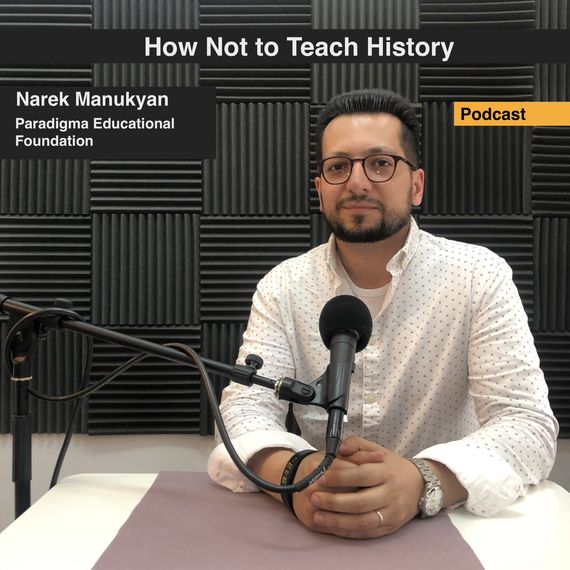
Narek Manukyan, co-founder of the Paradigma Educational Foundation speaks to EVN Report about how educators approach the way history is taught in the classroom, how teachers design their lesson plans and how this can impact identity and development.
by the same author
Dealing With a New Wave of Land Mines
By Lusine Sargsyan
Following the First Karabakh War, landmines and explosive remnants of war became a major hazard for civilians. Today, four regions of Armenia are still contaminated with unexploded ordnance, impacting over 35,000 residents.
Post-War Reality: Reintegration and Rehabilitation of Soldiers
By Lusine Sargsyan
Approximately 11,000 soldiers were injured during the 2020 Artsakh War. As they are healing and trying to reintegrate back into society, they are often facing bureaucratic red tape and an inaccessible physical environment.
Roots of the Demarcation Issue
By Lusine Sargsyan
The November 10 ceasefire agreement ended the 2020 Artsakh War, but the issue of demarcating the new state borders between Armenia and Azerbaijan has been a major concern since then.
Armenia v. Azerbaijan: On the Frontlines of the Law
By Lusine Sargsyan
The military phase of the 2020 Artsakh War seems to have ended but the legal fight for restoring and upholding human rights is just beginning. Armenia’s Inter-State Application against Azerbaijan to the ECHR marks the beginning of that strategic process.
Armenia’s Food Security
By Lusine Sargsyan
In a world where pandemics, extreme climatic phenomena and natural disasters are becoming more common, the issue of food security is a global challenge of increasing importance. Armenia is not immune to these developments.
Azerbaijan’s Anti-Armenian Policies Before the Artsakh War
By Lusine Sargsyan
Although the severity of war crimes committed by Azerbaijan and its disregard for international humanitarian law was unprecedented during the 2020 Artsakh War, it is a continuation of official Baku’s anti-Armenian policy stretching back over a century.

